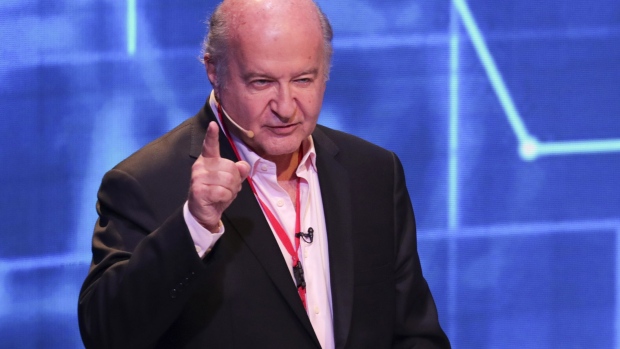Nov 4, 2022
An Influential Economist Has a Market Solution for Resolving Tensions Over Mining in Peru
, Bloomberg News

(Bloomberg) -- Community conflicts have been the Achilles’ heel of Peruvian mining for decades, holding back multibillion-dollar investments and disrupting giant copper mines.
Now a local economist-turned-politician is touting a novel approach to resolving tensions once and for all -- listing indigenous property rights on exchanges to either make communities project partners or give them market value compensation.
It may seem like a far-fetched idea, especially in a nation whose mineral riches are juxtaposed by poor institutions and infrastructure and volatile and polarized politics.
But Hernando de Soto is no crackpot. He has advised world leaders, heads an influential think tank and was chosen by Time Magazine as one of the five leading Latin American innovators of the century.
“Communities no longer agree with the price they were paid for their land,” he said in an interview. “They want companies to pay for a copper territory not potato territory.”
De Soto, who last year ran for president with a right-wing party, sees the indigenous property system operating on web3, which refers to a vision of a decentralized internet built around blockchains. It would allow communities to make the transition from ancestral customs to capitalism, giving them access to international markets, he said.
The proposal has the support of at least some indigenous groups and political parties. “I received the representatives of the Las Bambas communities whom we will support in their quest to join the international market,” head of Congress Jose Williams wrote on his Twitter account after meeting De Soto.
Ultra-nationalist Antauro Humala -- who led a 2005 uprising in the country and is currently organizing rallies in the mineral-rich south -- has also expressed interest. Mining entrepreneur Roque Benavides, who attributes much of the unrest to a soft-handed approach by authorities, will discuss the proposal with De Soto in a conference organized by the University of Juliaca.
Even if De Soto’s proposal falls flat, it will certainly broaden the debate on how to address community tensions in mining areas.
There’s a lot at stake. Peru is already the largest copper producer after neighboring Chile and a major supplier of zinc, silver and gold. Its huge untapped potential could help meet surging global demand as the clean-energy transition gains momentum.
But sometimes-bloody protests have quashed projects, while sporadic roadblocks and mine-site invasions upend operating mines. The most iconic of those is Hong Kong-listed MMG Ltd.’s Las Bambas, which is currently suspending production due to blockades and has endured an estimated 18 months of outages over six years.
Part of the unrest is due to frustrations among indigenous groups over what they see as insufficient compensation for land now being used by mining companies.
“The indigenous communities are on the largest copper reserves,” De Soto said. “Sooner or later these mines have to be uncovered. How is the country going to do that? Sending in the armed forces or benefiting the indigenous people? Now it’s their turn.”
©2022 Bloomberg L.P.








